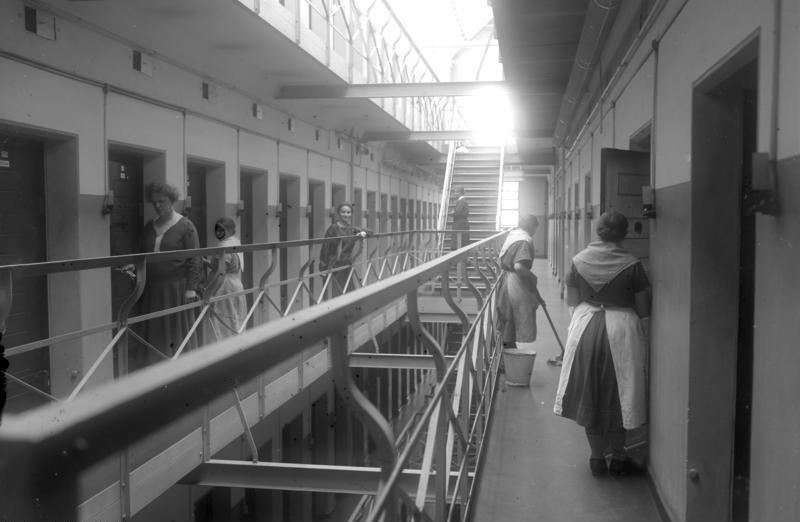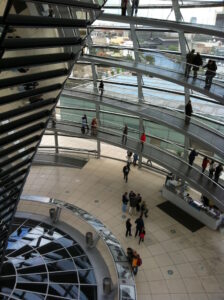Lessons on Freedom, Resistance, and Repression
Berlin hides many of its secrets in plain sight, and if you know where to look, you can uncover places that provoke deep reflection. In our own current day, we’re wrestling with what it means to be free people. Who gets to decide what freedom is and what it looks like? What happens to those who have different understandings of freedom. We’re fighting, once again, to understand the tendency towards fascism that some of our fellow humans have and try to understand what another bout of fascism might look like, what the penalties may be for ignoring it or fighting against it long after the right time has passed.
Berlin offers you the chance to pick any number of places where possible answers might be lurking. One place, almost entirely unvisited and indeed practically forgotten by the modern world, is the site of the former Women’s Prison, located at 10 Barnimstrasse, cradled in fact in the corner of Buschingstrasse and Mollstrasse, a mere ten-minute walk from the city’s central Alexanderplatz.
Today the area is a relatively small, thinly forested park, often used by new drivers practicing basic maneuvers and surrounded by identi-kit late DDR era housing blocks. It’s not a place that would attract casual attention, yet its one of Berlin’s more powerful spots to sit and rest and contemplate the nature of freedom and resistance.

Von Bundesarchiv, Bild 102-12435 / CC-BY-SA 3.0, CC BY-SA 3.0 de, Link
The prison’s early life
In 1864, the city’s main prison for women was built here, at a time when the Second Reich and Imperial Germany was still just under seven years in the future. The prison was built of red brick and was suitably grim and forbidding. Initially, during the late 19th century, women were held here for crimes including abortion (that’s the first topic worth reflecting on), prostitution (probably the second topic worth mulling over) and socialism (still relevant and you guessed it, the third subject worth thinking about). Rosa Luxemburg, the early 20th century’s great female socialist revolutionary, was once imprisoned here.
For me, it’s worth pausing her and asking questions about the nature of these crimes. Do we see them today as signs of a more upright society, one to worth attempting to recreate today? Or do we look at them as signs of a repressive, and repressed, backward society that we ought to keep firmly in the rearview mirror? We might ask ourselves if something can be both a crime but also not morally wrong. Whatever position you take, it’s certainly worth noting how much society as changed and, for those of more liberal persuasions, how far we’ve come in a reasonably short time.
Yet the ghost of the prison is an unquiet one and if you visit this site on a cold winter’s evening, these are genuinely evocative and provocative thoughts to chew on.
The Nazi Era
During the Nazi era, the prison, by now remodeled and one of the continent’s most effective containment facilities, was used to imprison women who opposed the regime. For over 300 women, this place was their penultimate stop before being executed, most often in Plotzensee Prison across town.
Numbers, as always, give us data but they don’t really tell the story. So I decided to look up some of the women kept here during the Hitler years, before being led away to be killed. I found, for example, the case of Else Imme, who was arrested for raising money to help those persecuted by the Nazis. She also offered her flat for use for anti-regime meetings, where she reported on what she had learned from her subversive listening to Soviet radio. Imme was certainly acting against Nazi interests, but her crimes strike us today as minor, having no effect on the war effort. But to a party and government that sought to control the hearts and minds of its populace, her offences were deemed serious enough to for her to lose her head over.
Hilde Coppi – First giving Birth to her Son, then led to the Guillotine
I clicked on another prisoner’s name, a certain Hilde Coppi, who was found guilty of treason for helping soldiers’ relatives learn about the fate of their missing men. She also fought against the official anti-Soviet propaganda in various ways, large and small. She was arrested and was allowed to give birth to her son before being led from the prison to the guillotine. She died in dismay at being separated from her newborn child.
The stories, as I clicked, were all very similar. Women who worked against the government were shown little to no mercy. This raises an interesting question. Where do we draw the line between genuine treason and principled resistance? And, what does it say about a government when their fear is so all-pervasive that a citizen listening to enemy radio is a crime that could only lead to the scaffold?
Post War uses
After the war, the communist state, the DDR, erected a memorial that practically sizzled with anger. It read:
«Between 1933 and 1945, many resistance fighters against National Socialism were imprisoned in the Barnimstrasse women’s prison. For more than three hundred women, this was the last stop before their execution in Plötzensee. They were murdered because they distributed leaflets, helped the persecuted, listened to foreign radio stations, expressed doubts about the ‘final victory’ or committed minor crimes for which the Nazi justice system sentenced them to death as ‘enemies of the people’. The building continued to be used as a women’s prison after 1945 and was demolished in 1974.»
After this memorial was destroyed in the post-cold war era, a new, far more succinct sign was put up, announcing in essence that a prison once stood here and held members of the anti-Nazi resistance. To me, the DDR era wording was much more evocative and powerful. Be that as it may, at the site today you can follow a simple walking trail which highlights some of the former prisoners’ lives and the events that took place here.
So do yourself a favor and head down to sites like these, places of memory that are slowly becoming half-forgotten as the years pass, but whose stories are of timeless relevance as we enter a new era of political turmoil and potential repression. Walking the very ground where past generations faced the consequences of not halting dictatorship in time is always worthwhile.





